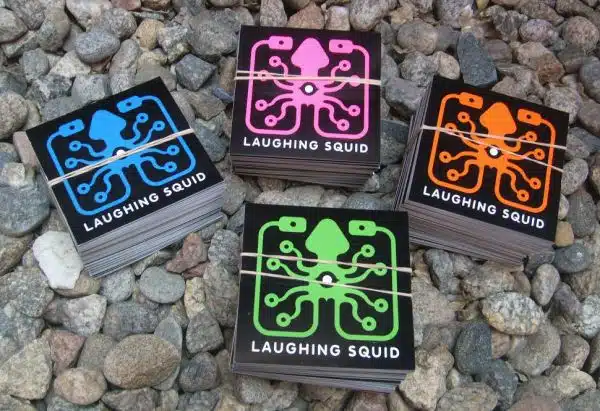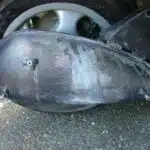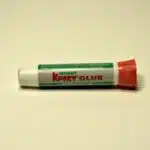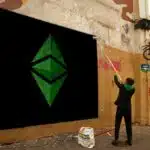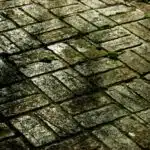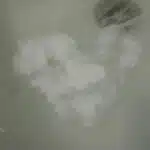As a professional cleaning specialist, I understand the importance of maintaining a clean and polished appearance for metal surfaces. However, this task can be challenging when faced with stubborn stickers or adhesive residue that seems impossible to remove. Fortunately, there are several effective methods for removing stickers from metal surfaces without causing damage or leaving behind unsightly marks.
In this article, we will explore various techniques and products that can be used to safely and effectively remove stickers from metal surfaces. From using common household items such as vinegar and baking soda, to specialized commercial products designed specifically for the removal of adhesive residue, we will cover a range of options that will help you restore your metal surfaces to their original condition with minimal effort. Whether you are dealing with a small sticker on a kitchen appliance or a large decal on a vehicle, these tips and tricks will ensure that your metal surfaces remain clean and polished for years to come.
Understanding Adhesive Residue
Metal surfaces are commonly adorned with stickers, labels, and adhesives. Over time, these items may wear out or become outdated, resulting in the need to remove them. However, removing the adhesive residue from metal surfaces can be a daunting task. To successfully remove adhesives from metal surfaces, it’s essential to understand the different types of adhesives and how they interact with common metal surfaces.
There are several types of adhesives that may have been used on metal surfaces, including water-based, solvent-based, and pressure-sensitive adhesives. Water-based adhesives are often used for temporary applications and are easy to clean up. Solvent-based adhesives are more permanent and require stronger solvents for removal. Pressure-sensitive adhesives are typically used for labeling and packaging applications and can be removed with relative ease.
Common metal surfaces include aluminum, steel, brass, copper, and stainless steel. Each of these metals has unique characteristics that determine how well an adhesive will stick to them. For example, aluminum is a soft metal that is prone to scratching; therefore it requires gentle handling during adhesive removal. Steel is a hard metal that can withstand more abrasive cleaning methods but may rust if not dried thoroughly after cleaning.
Understanding the type of adhesive used on your metal surface and the properties of the metal itself is crucial in determining the proper removal method. Failure to consider these factors could result in damage to the underlying surface or incomplete removal of adhesive residue. In preparing your work area for adhesive removal, take note of these factors so you can effectively remove all traces of adhesive without causing any damage to your metal surface.
Preparing Your Work Area
- It is important to gather the appropriate supplies prior to attempting to remove stickers from metal. This may include items such as rubbing alcohol, mineral oil, adhesive remover, and cotton swabs.
- It is advisable to choose a location with adequate ventilation for sticker removal, as some of the supplies may produce fumes.
- It is important to wear gloves and safety glasses when handling products with fumes.
- Additionally, it is important to cover any nearby surfaces with a protective material to avoid any damage from the removal process.
Gather Supplies
When it comes to removing stickers from metal, one of the first steps is to gather supplies. This simple task can help you stay organized and ensure that you have everything you need before tackling the project. Begin by organizing your supplies in a designated area, such as a table or countertop. This will make it easier to find what you need and prevent any confusion during the removal process.
Choosing the right tools is also essential when removing stickers from metal. Depending on the type of metal and adhesive used, different tools may be necessary. For instance, a plastic scraper or credit card can work well for gently removing stickers from delicate surfaces, while a razor blade or putty knife may be better suited for tougher adhesives. Take care when selecting your tools and always prioritize safety.
In conclusion, taking the time to gather supplies and choose the right tools can make all the difference when removing stickers from metal. By staying organized and thinking carefully about each step of the process, you can successfully remove even stubborn stickers without damaging your metal surfaces. With these tips in mind, get ready to enjoy shiny, sticker-free metal once again!
Choose Location
When preparing your work area for sticker removal on metal surfaces, it is important to choose the right location. The area you choose should be clean, well-lit, and free of any obstructions that could cause accidents. A large, flat surface such as a table or countertop can provide ample space to work with and make it easier to see what you are doing.
Choosing tools is an essential part of preparing your work area for removing stickers from metal surfaces. Different types of adhesives require different types of tools. For example, a plastic scraper or credit card can gently remove stickers from delicate surfaces without causing scratches. On the other hand, tougher adhesives may require a razor blade or putty knife to remove them. Careful consideration should be given when selecting tools to prevent scratches and damage to the metal surface.
Preventing scratches is also crucial in preparing your work area for removing stickers from metal surfaces. By laying down a protective covering such as a towel or newspaper on your work area, you can prevent scratches and other damage caused by accidental slips or drops. Additionally, using a light touch when applying pressure with your chosen tool can help minimize scratching during the removal process. By taking these considerations into account, you can ensure a successful sticker removal process while minimizing any potential damage to the metal surface.
Gathering Your Materials
When removing stickers from metal surfaces, it is crucial to choose appropriate tools that will not damage the material. Metal surfaces can be delicate and prone to scratches, so using abrasive tools such as steel wool or rough sponges should be avoided. Instead, opt for gentle cleaning materials like microfiber cloths or soft-bristled brushes that will effectively remove the sticker without harming the metal.
Another important aspect to keep in mind while removing stickers from metal is safety precautions. Before beginning the process, make sure to wear gloves and protective eyewear to prevent any injuries from adhesive residue or sharp edges on the surface. In addition, ensure adequate ventilation in the area where you will be working to avoid inhaling any harmful fumes from cleaning products.
Taking these safety precautions into consideration and choosing appropriate tools can help make sticker removal a much smoother process. In the next section, we will discuss another effective method for removing stickers from metal: using heat to loosen adhesive. By following proper procedures and taking necessary precautions, you can successfully remove stickers without causing any damage to your metal surfaces.
Using Heat To Loosen Stickers
- Preparing the metal surface is the first step for removing stickers with heat. It is best to remove any dirt and debris from the surface before beginning the process.
- Applying heat is the next step in the process. It is best to use a heat gun or blow dryer to apply the heat.
- The heat should be applied for one to two minutes, allowing the glue to loosen.
- Once the heat has been applied, the sticker should be carefully removed.
- If any residue remains on the metal surface, it can be removed with a cloth or paper towel.
- For stubborn sticker residue, a specialized cleaning solution may be necessary to completely remove it from the metal surface.
Preparing The Metal Surface
Removing stickers from metal surfaces can be a daunting task, especially when it has been stuck for a long time. Using heat to loosen stickers is one of the most effective methods to remove them. However, before applying heat, preparing the metal surface is crucial. This step ensures that the sticker comes off with ease and prevents any damage to the metal surface.
The first step in preparing the metal surface is removing rust. Rust can make it challenging to remove stickers since it weakens the adhesive layer. To remove rust, use an abrasive pad or sandpaper and scrub gently until there are no visible signs of rust. It’s important not to over-scrub as this can cause scratches on the metal surface that will become more noticeable once the sticker is removed.
The next crucial step in preparing the metal surface is preventing scratches. Scratches on the metal surface can be unsightly and may lead to further damage if not taken care of immediately. A simple way to prevent scratches is by covering the surrounding area with masking tape or painter’s tape before applying heat to loosen the sticker. This will ensure that only the intended area is affected, leaving no room for accidental scratches during removal.
By preparing the metal surface correctly, using heat to loosen stickers becomes a breeze. Remember to remove any rust using an abrasive pad or sandpaper and prevent any scratches by covering surrounding areas with masking tape or painter’s tape. With these steps in place, you’ll have a clean and scratch-free metal surface in no time!
Applying Heat
Once the metal surface has been prepared, the next step is to apply heat to loosen the sticker. One effective method is using a hair dryer. Set it on high heat and hold it about 6 inches away from the sticker for a few minutes until you notice the edges starting to lift. Be careful not to hold it too close or for too long as this can cause damage to both the sticker and the metal surface.
If using a hair dryer doesn’t work, there are chemical options available. One common option is using rubbing alcohol or acetone. Apply a small amount of either substance onto a cloth and rub it over the sticker until it starts to loosen. Keep in mind that some chemicals can also cause damage to certain types of metals, so be sure to research which ones are safe to use before trying this method.
When applying heat or chemicals, it’s important to wear gloves and work in a well-ventilated area as some substances can be harmful if inhaled or come into contact with skin. Additionally, always test on an inconspicuous area first before applying any heat or chemicals directly onto the sticker. With these precautions in mind, using heat or chemicals can help make removing stickers from metal surfaces easier and less time-consuming than traditional methods like scraping with a razor blade or using adhesive removers.
Removing Sticker Residue
After successfully removing a sticker from a metal surface, the next concern is how to effectively eliminate the remaining adhesive residue. This can be challenging, particularly if the sticker has been on the surface for an extended period or if it was exposed to heat or sunlight. Fortunately, there are various methods available for effectively removing sticker residue.
One common method for removing sticker residue is using solvents such as rubbing alcohol, vinegar, or nail polish remover. These substances are effective in breaking down the adhesive and making it easier to wipe away with a cloth or sponge. However, it’s essential to prevent damage to the metal surface by avoiding harsh chemicals that could corrode or discolor it.
Another approach for removing sticker residue is using oils such as cooking oil, baby oil, or olive oil. These oils work by loosening the adhesive and making it easier to wipe away with a cloth or sponge. Additionally, they are gentle on the metal surface and do not cause any damage.
In conclusion, when using heat to loosen stickers from metal surfaces, it’s essential to consider how to remove any leftover adhesive residue effectively. Using solvents or oils can be an effective solution; however, preventing damage is crucial when choosing which substances to use. With these tips in mind, you can remove both stickers and their sticky residues without damaging your valuable metal surfaces.
Applying Oil Or Lubricant
As the saying goes, “oil and water don’t mix,” and that’s precisely why applying oil or lubricant is an effective method for removing stubborn stickers from metal surfaces. The oil acts as a barrier between the sticker and the surface, weakening its adhesive properties and making it easier to peel off. Additionally, using solvents such as rubbing alcohol or vinegar can also aid in breaking down the adhesive.
Here are three steps to effectively remove stickers using oil or lubricant:
- Apply a few drops of oil or lubricant onto the sticker and let it sit for 10-15 minutes.
- Gently scrape off the sticker with a plastic scraper or credit card.
- Wipe away any residue with a clean cloth.
Another method you can try is applying heat to the sticker before using oil or solvents. Using a hair dryer on low heat can help soften the adhesive, making it easier to remove. However, be careful not to overheat the metal surface as this may cause damage.
Next up, we’ll discuss how soaking in warm water can also be an effective way to remove stickers from metal surfaces.
Soaking In Warm Water
One effective method for removing stickers from metal is to soak the object in warm water. The benefits of using warm water are numerous. Firstly, it softens the adhesive that binds the sticker to the surface, making it easier to remove without causing any damage. Secondly, warm water is a safe and gentle cleaning agent that poses no harm to metal objects.
The time required for soaking stickers varies depending on the size and type of sticker. Generally, a fifteen-minute soak is enough to dissolve most adhesives and loosen the sticker. However, if the sticker has been on the metal surface for an extended period or is particularly stubborn, it may require more soaking time. It is important not to rush this process as forcing off a sticker can result in scratches or marks on the surface.
Once the sticker has been soaked adequately, it’s time to move onto scrubbing with a soft cloth. But before that, ensure that all excess water has been drained off from the object’s surface. Wipe down with a clean dry cloth if necessary before scrubbing with a soft cloth or sponge. In this next step, we will explore how you can use light pressure and circular motions while scrubbing away any remaining residue from your metal surface quickly and easily.
Scrubbing With A Soft Cloth
When it comes to removing stickers from metal surfaces, there are various techniques that you can use. One of the most effective ways is by scrubbing with a soft cloth. This technique involves using a gentle yet firm motion to remove the adhesive residue left behind by the sticker.
The benefits of scrubbing with a soft cloth are numerous. For one, it does not require any harsh chemicals or tools that can damage the metal surface. Also, it is an easy and inexpensive method that anyone can perform at home without needing any special skills or equipment.
Different scrubbing techniques can be used depending on the type of metal and adhesive residue. For instance, if the sticker has been on for a long time or is particularly stubborn, you may need to use more pressure or apply heat to soften the adhesive before scrubbing. Additionally, you could wet the cloth with warm water or rubbing alcohol to aid in lifting off the sticker.
Moving forward, another effective method for removing stickers from metal is using vinegar or baking soda. By following specific steps, these household items can help break down the adhesive residue and make it easier to scrub off using a soft cloth.
Using Vinegar Or Baking Soda
An alternative method to remove stickers from metal is by using vinegar or baking soda. Vinegar and baking soda are household items that can be easily found in any kitchen, making them a convenient option for sticker removal. Additionally, they are non-toxic and safe to use on most metals.
To use vinegar or baking soda, start by soaking a cloth in either substance. Place the cloth on top of the sticker and let it sit for several minutes. The acid in vinegar or the abrasive texture of baking soda will break down the adhesive, making it easier to remove the sticker. After letting it sit, gently scrub with a soft-bristled brush until the sticker comes off completely.
It’s important to take safety precautions when using these methods. Wear gloves to protect your hands from any potential irritation, and make sure to work in a well-ventilated area as vinegar has a strong odor. Despite being non-toxic, avoid getting either substance in your eyes or mouth as they can still cause discomfort.
Trying Commercial Adhesive Removers
Commercial adhesive removers can be effective in removing stickers from metal surfaces. These products contain chemicals that dissolve the adhesive, making it easier to peel off the sticker. It is important to choose a product that is appropriate for the type of metal surface you are working with, as some chemicals can cause damage or discoloration.
When using chemical alternatives, it is important to follow safety precautions. Many commercial adhesive removers contain volatile organic compounds (VOCs) which can be harmful if inhaled or come into contact with skin. It is recommended to wear protective gloves and a mask while using these products and work in a well-ventilated area. Additionally, it may be beneficial to test the product on a small, inconspicuous area before applying it to the entire surface.
For those looking for eco-friendly solutions, there are natural alternatives such as vinegar or lemon juice that can also help dissolve adhesive. However, these options may require more effort and time compared to commercial products. It’s important to note that while these natural solutions are considered safe for the environment, they may still cause damage or discoloration to certain types of metal surfaces.
Using commercial adhesive removers or natural alternatives can be an effective way to remove stickers from metal surfaces. However, if these options do not work or if the sticker has been on the surface for an extended period of time, scraping with a plastic blade may be necessary.
Scraping With A Plastic Blade
As a professional cleaning specialist, I understand the frustration of trying to remove stubborn stickers from metal surfaces. While there are various methods available, one effective technique is scraping with a plastic blade. This method involves using a plastic tool to gently scrape away the sticker residue without damaging the metal surface.
Before using this technique, it is important to take safety precautions. Wear gloves to protect your hands and avoid any sharp or pointed edges on the plastic blade that could potentially cause injury. Additionally, avoid using excessive force when scraping as this can also damage the metal surface.
While a plastic blade is an excellent tool for removing stickers from metal surfaces, there are also alternative tools that can be used such as credit cards or plastic spatulas. These alternatives work in a similar manner to the plastic blade and offer more flexibility in terms of size and shape.
Next up in our process for removing stickers from metal surfaces is polishing and finishing the surface.
Polishing And Finishing The Surface
When it comes to removing stickers from metal surfaces, polishing and finishing the surface after removal is essential to restore the appearance of the metal. Choosing the right polish is key in this process. There are various polishes available in the market, but using one that is specifically designed for metal surfaces will be effective in removing any adhesive residue left behind by the sticker.
Once you have removed the sticker and adhesive residue, it is important to protect the metal surface from future damage. Using a protective coating or wax can help prevent scratches and other damage caused by daily wear and tear. Additionally, these products can enhance the shine of the metal surface and make it look as good as new.
Polishing and protecting your metal surfaces not only restores their appearance but also helps extend their lifespan. By investing a little time and effort into maintaining your metal surfaces, you can keep them looking pristine for years to come. In the next section, we will discuss common mistakes to avoid when removing stickers from metal surfaces.
Avoiding Common Mistakes
Preventing Damage is Key
Before we delve into the specifics of removing stickers from metal, it’s important to understand that preventing damage is key. While removing stickers may seem like a simple task, if not done correctly, it can result in scratches or discoloration on the surface of the metal. This is why it’s crucial to have a proper understanding of what tools to use and how to use them effectively.
Proper Tools
When it comes to removing stickers from metal, having the right tools is essential. However, it’s important to avoid using sharp objects such as knives or razors, as they can easily scratch the metal surface. Instead, opt for plastic scrapers or credit cards to gently scrape away at the sticker. Additionally, using solvents such as rubbing alcohol or vinegar can aid in loosening the adhesive and make removal easier.
Dealing with Large Stickers or Decals
Now that you have a better understanding of preventing damage and using proper tools when removing stickers from metal, let’s move on to dealing with large stickers or decals. These types of stickers can be more difficult to remove and may require a bit more elbow grease. One effective method is to use a hairdryer on low heat to warm up the adhesive before attempting removal. This will soften the adhesive and make it easier to scrape away at the sticker with your plastic scraper or credit card. Remember to take your time and work slowly so as not to damage the metal surface underneath.
Transitioning into our next section about dealing with large stickers or decals, it’s important to note that these types of stickers can vary greatly in size and be much more stubborn than smaller ones. However, by following some simple steps like warming up the adhesive before scraping away at the sticker with gentle pressure using proper tools like a plastic scraper or credit card, you’ll be able to remove even those stubborn decals without damaging your precious metals!
Dealing With Large Stickers Or Decals
Removing stickers from metal can be a challenge, but it is essential to do it correctly to avoid damaging the surface. In the previous section, we discussed how to avoid common mistakes when removing stickers from metal. In this section, we will explore how to deal with large stickers or decals by applying solvents and using a hair dryer.
One effective way to remove large stickers or decals from metal is by applying solvents. Solvents dissolve the adhesive, making it easier to peel off the sticker without leaving any residue on the surface. Before using a solvent, it is important to test it on a small area of the metal first to ensure that it does not cause any damage or discoloration. Some common solvents that work well for removing stickers from metal include rubbing alcohol, vinegar, and nail polish remover.
Another useful technique for removing large stickers or decals from metal is using a hair dryer. The heat from the hair dryer softens the adhesive, making it easier to peel off the sticker without leaving any residue behind. Hold the hair dryer about six inches away from the sticker and move it around in circular motions for about 30 seconds. Then use your fingernail or a plastic scraper to gently lift one corner of the sticker and slowly peel it off.
Nested bullet point list:
Sub-list 1: Emotional Response – Relief
No more unsightly stickers ruining your metal surface
A clean and polished look that makes you proud of your belongings
Sub-list 2: Emotional Response – Satisfaction
Knowing you have effectively removed stubborn stickers without damaging your possessions
Feeling accomplished in mastering an essential cleaning skill
In conclusion, dealing with large stickers or decals on metal requires patience and care. Applying solvents like rubbing alcohol or vinegar can help dissolve the adhesive while using a hair dryer can soften it up before peeling off the sticker carefully. With these techniques, you can remove stickers from metal without causing any damage or leaving behind any residue. In the next section, we will discuss how to remove stickers from different types of metal surfaces.
Removing Stickers From Different Types Of Metal
Removing stickers from different types of metal can be a challenging task. The first step is to differentiate the type of metal you are dealing with, as this can impact the removal process. Some metals, such as aluminum and stainless steel, are less prone to damage than others, like copper or brass. It is important to take caution when removing stickers from these more delicate metals, as they may require a gentler approach.
Another factor to consider when removing stickers from metal is the surface texture. Smooth surfaces like stainless steel are easier to clean than textured surfaces like brushed nickel or antique brass. In addition, painted or coated metals may require special attention to avoid damaging the finish. To remove stickers from textured metal surfaces, use a soft-bristled brush or sponge and apply gentle pressure while working in circular motions.
In summary, removing stickers from metal requires careful consideration of both the type of metal and its surface texture. By taking heed of these factors and using appropriate cleaning tools and techniques, you can effectively remove any unwanted sticker residue without causing damage. With that said, it is also important to maintain your metal surfaces on a regular basis to prevent sticker residue buildup in the first place.
Maintenance Tips For Keeping Metal Surfaces Clean
As we discussed in the previous section, removing stickers from metal can be a daunting task. However, with the right techniques and tools, it can be done effectively and efficiently. Now that you have successfully removed those pesky stickers, it is important to maintain the cleanliness of your metal surfaces. Regular cleaning not only keeps your surfaces looking pristine but also helps to prevent corrosion and other damage.
Importance of regular cleaning:
- Regular cleaning prevents dirt and grime buildup that can cause wear and tear on metal surfaces.
- It helps to prevent rust and oxidation, which can weaken the metal over time.
- Consistent cleaning also ensures that any potential hazards or safety risks are addressed promptly.
Choosing the right cleaning products:
- It is crucial to use appropriate cleaning agents based on the type of metal surface you are working with.
- Abrasive cleaners should be avoided as they can scratch or damage certain metals.
- Always read labels carefully before using any cleaning product.
Regular maintenance is key to ensuring the longevity and durability of your metal surfaces. By following these simple tips for regular cleaning and choosing the right products, you can keep your metal surfaces looking shiny and new for years to come. Remember, a little bit of effort goes a long way in preserving your valuable investments.
Conclusion
Removing stickers from metal surfaces is an important task that requires proper techniques and tools to avoid damaging the material. Adhesive residue can be stubborn and challenging to remove, but with the right approach, it is possible to eliminate it entirely. By understanding how adhesive works and preparing your workspace, you can ensure that the process of removing stickers from metal surfaces is successful.
Gathering all necessary materials such as heat sources, oils or lubricants, and scrapers will help speed up the process while minimizing damage to the metal surface. One interesting statistic shows that over 40% of people who attempt to remove stickers from metal surfaces end up damaging them due to a lack of knowledge and experience. Therefore, it is essential to follow these guidelines carefully when removing stickers from metal surfaces.
In conclusion, removing stickers from metal surfaces can be a daunting task that requires patience and care. With proper preparation and the right tools, it is possible to achieve a clean surface without causing any damage. By avoiding common mistakes and using appropriate methods for different types of metals, you can ensure long-term maintenance of your metal surfaces. Remembering these tips will help you keep your space looking clean and professional at all times.
Image Credits
- “Laughing Squid Stickers” by Scott Beale (featured)

